Durable, aromatic, lightweight, and rot-resistant, cedar is the perfect choice to build a lush wood planter. Once you’ve filled it with vines and flowers, it can serve as a welcome sight for you and your visitors. This Old House host Kevin O’Connor and general contractor Tom Silva demonstrate how to build your own western red cedar planter that can last for years.
Cedar Planter Box Project Overview
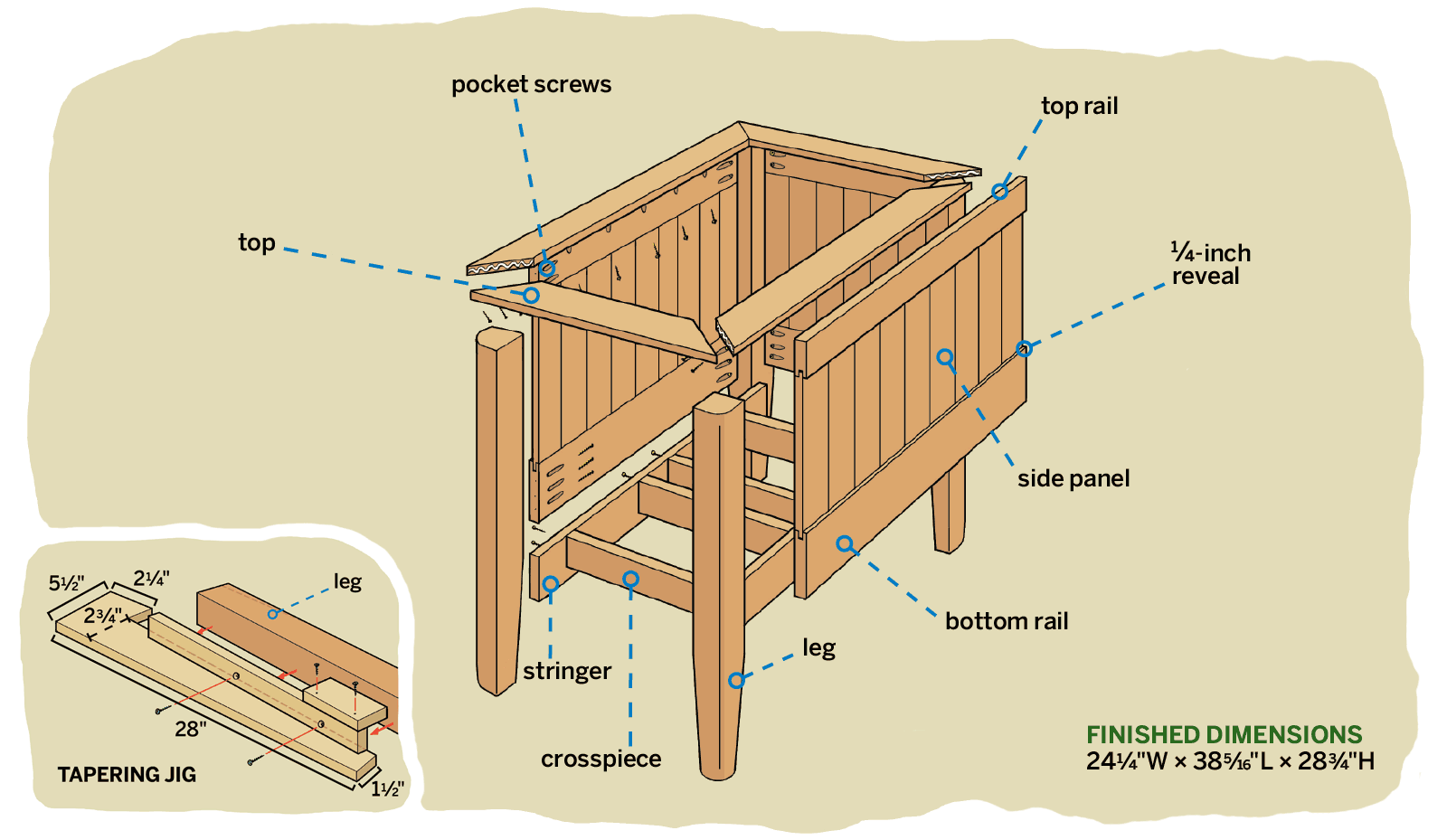
Before you begin, gather the following materials and tools:
Materials
- Grow bags or landscape fabric
- Milk crates
- Sandpaper (various grits)
- Stainless steel pocket screws
- Western red cedar boards, following the cut list below
- Wood finish suitable for outdoor use
- Wood screws
Tools
- Bar clamps
- Block plane
- Drill/driver
- Miter saw
- Pocket hole jig
- Random orbit sander
- Router and router table
- Table saw with dado blade
- Tape measure
Cut List
Top
5/4x6s (mitered long points)
2 at 38 5/16 inches
2 at 24 1/4 inches
Legs
4x4s ripped down to 2 1/4 inches square
4 at 28 3/4 inches
Top Rails
5/4x6s ripped to 2 3/4 inches wide
2 at 17 5/8 inches
2 at 31 1/16 inches
Bottom Rails
5/4x6s ripped to 5 inches wide
2 at 17 5/8 inches
2 at 31 1/16 inches
Stringers
5/4x6s
2 at 31 inches
Crosspieces
2x4s, ripped offcuts from legs
4 at 16 3/4 inches
Panel Pieces
1x4s
28 at 13 inches
How To Make a Cedar Planter Box
You’ll start building the planter with the legs and rails to provide a sturdy base. Then, you’ll add the side walls one by one. We’ll follow Silva’s process step-by-step.
Preparing the Cedar Pieces
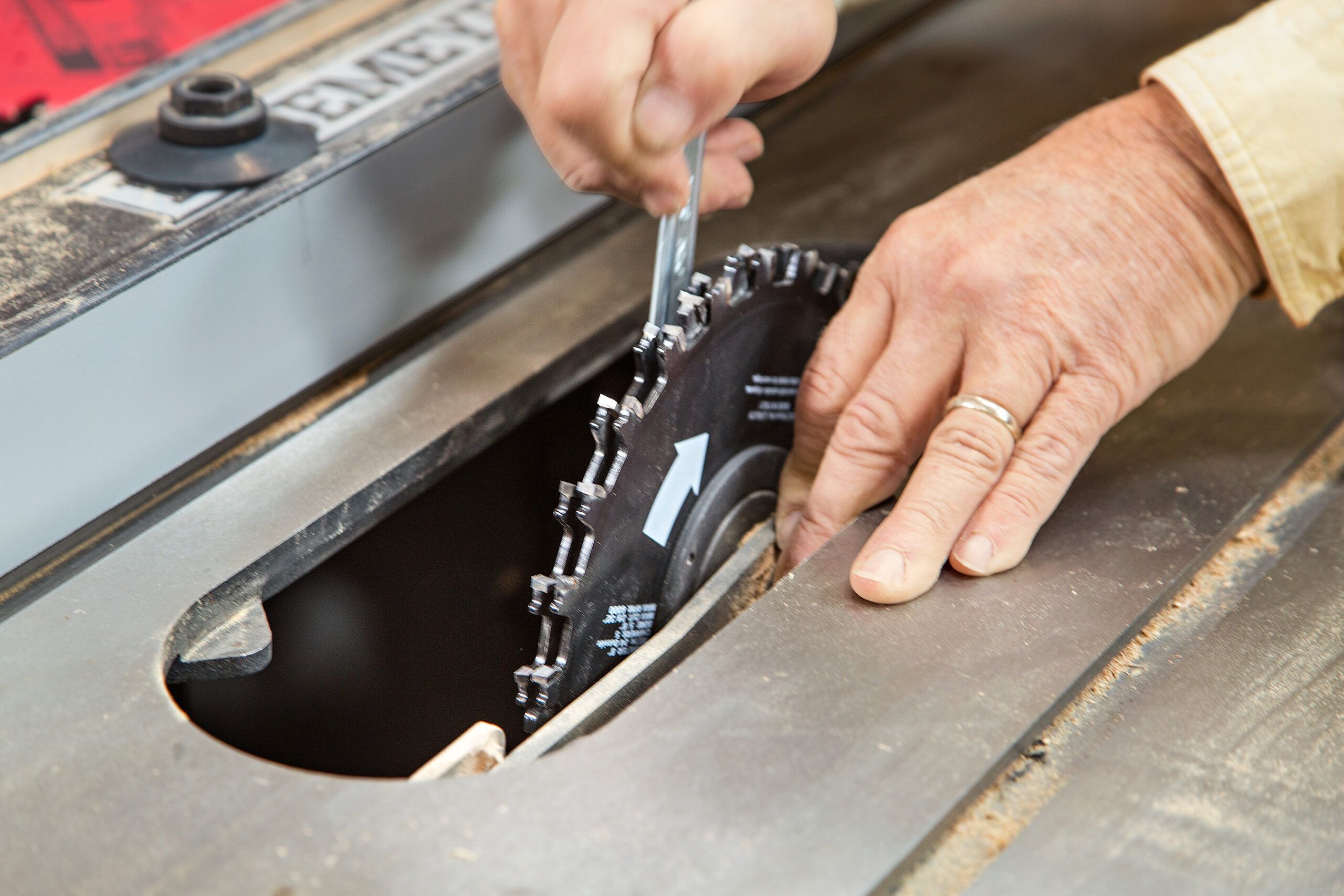
Silva starts by cutting all the pieces to length with a miter saw, except the crosspieces for the base. Then, he mounts a ⅜-inch stacked dado blade on a table saw to cut grooves at the ends of side-panel pieces. Silva sets the blade to a precise ⅜-inch deep cut.
Cutting Dadoes and Rabbets

Next, Silva positions the saw’s fence to make a full-length dado in one side of each rail, offset about ⅛ inch from the side’s centerline.
Where the dadoes hold the panel pieces, the rabbets fit into the dadoes. Silva clamps a 1 guide block to the fence and cuts ⅜ x ⅜ inch rabbets on both ends. If done right, the offset dado will make a pleasing ¼-inch reveal between the panel pieces and rails on the planter’s outside faces.
Making the Planter Box Legs
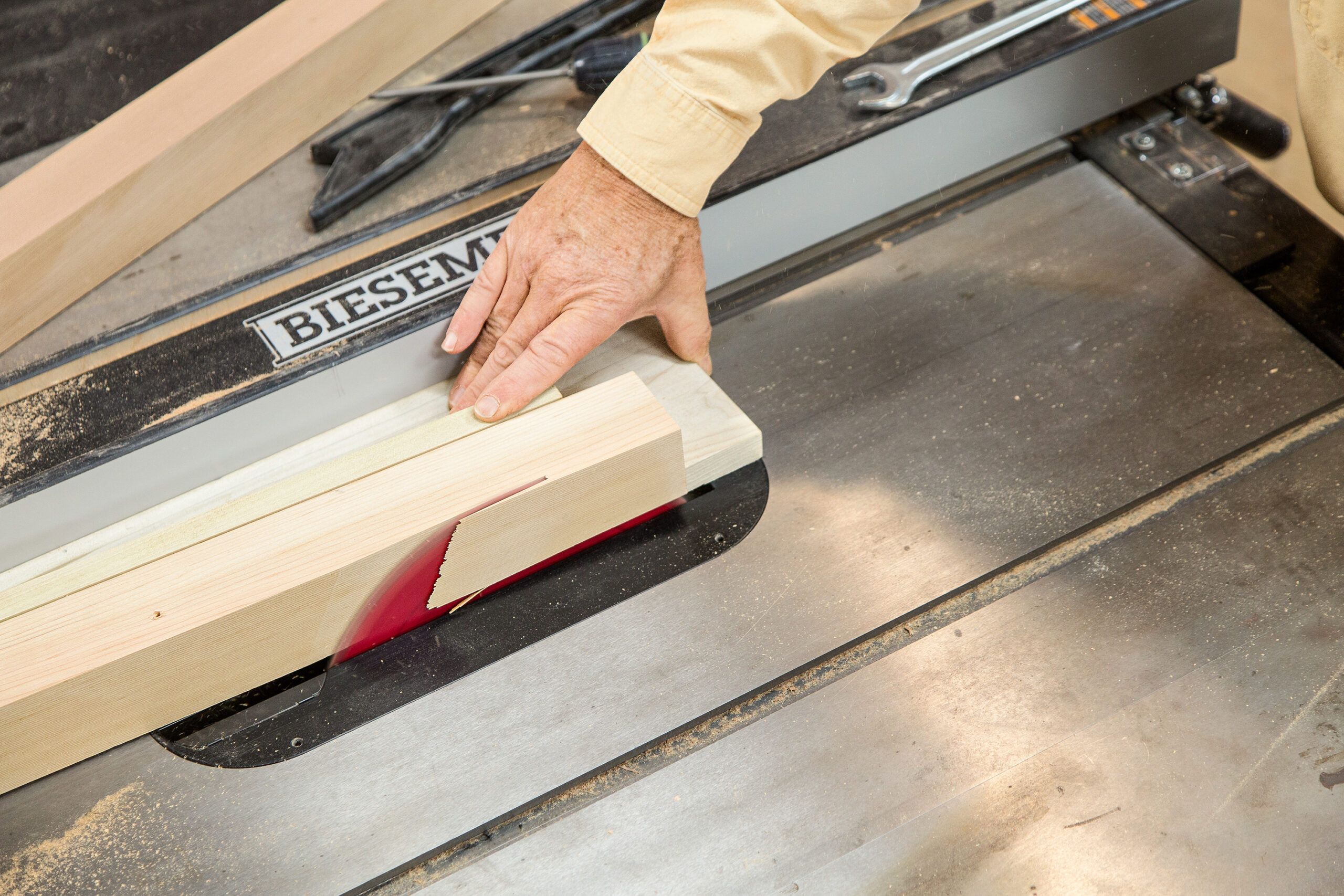
Silva then replaces the dado blade with a saw blade, ripping the rails to width and each 4×4 down to 2 ¼ x 2 ¼ inches.
Next, he makes a tapering jig to cut a 2.75-degree taper on the inward-facing sides of the lower legs. He’ll adjust the fence so the blade starts cutting the taper 8 inches from the leg’s end. Then, he repeats the taper for the other sides and legs, smoothing everything out with sandpaper.
Shaping the Legs
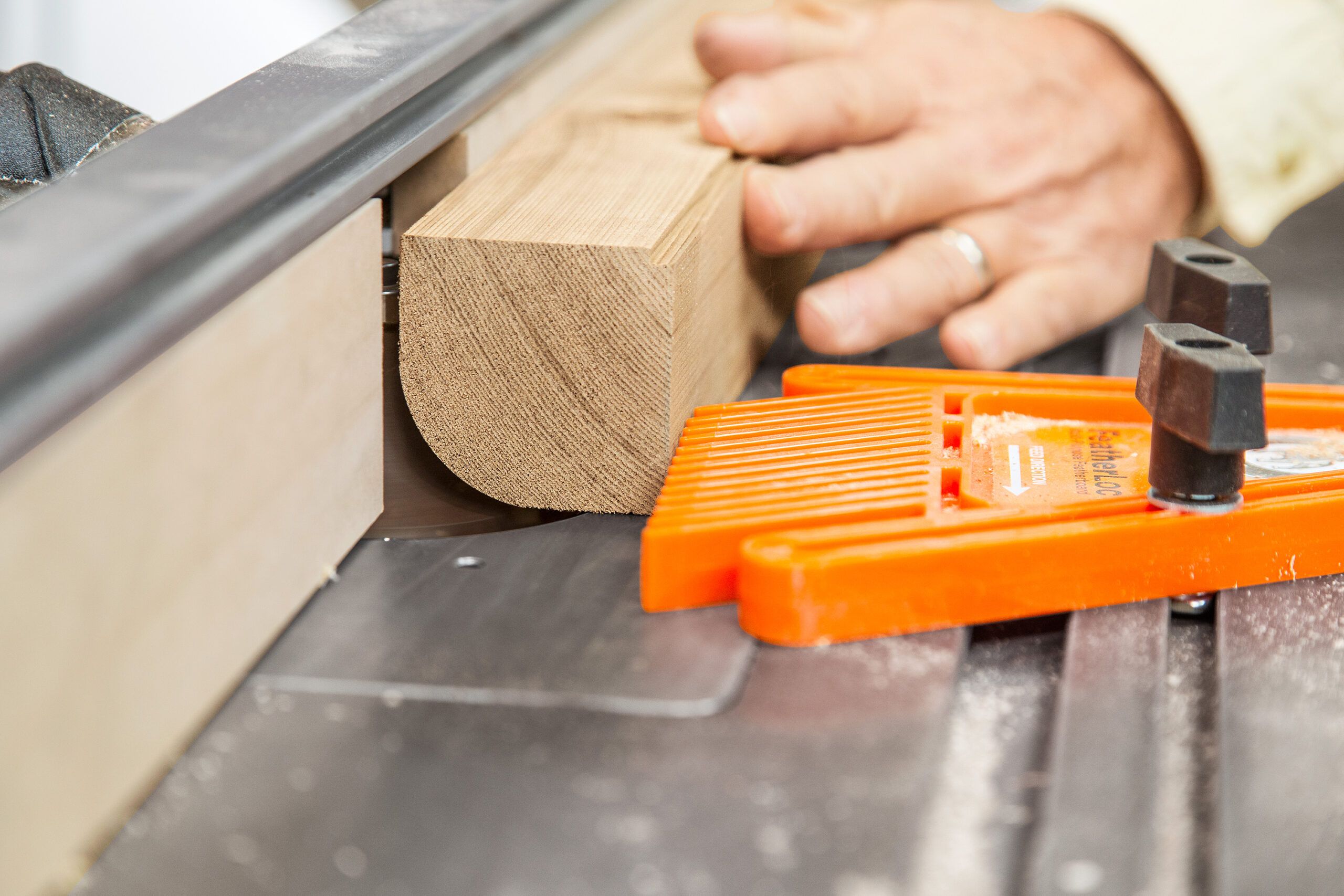
Finally, Silva shapes the legs using a router with a 1-inch-radius round-over bit. A block plane can help make a slight chamfer in the panel pieces’ long outside edges.
Cutting and Preparing the Planter Box Rails
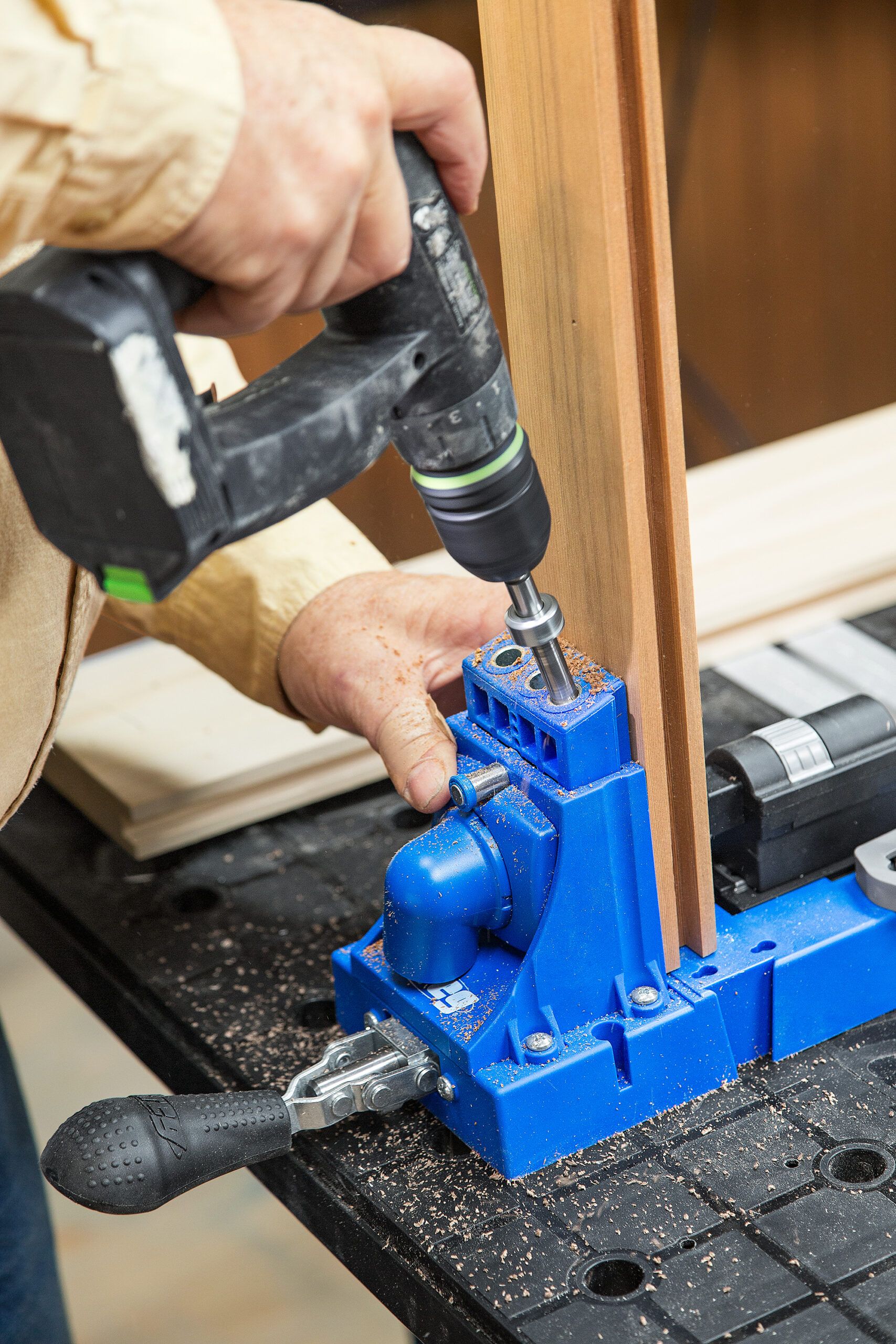
Next, Silva makes the rails from 5/4×6 cedar boards, ripped to 2 ¾ inches wide for the top rails and 5 inches wide for the bottom ones. He uses a dado blade on the table saw to cut ⅜-inch deep grooves along one edge of each rail, where the panel pieces will go.
Remember, the dadoes must fit snugly with the panel pieces. A misaligned dado can harm the planter’s structural integrity.
Next, using a pocket-hole jig and bit, Silva drills evenly spaced holes through the inside faces at both ends of the rails. He also drills pocket holes into the inside faces of the top rails, down toward the undadoed sides.
Attaching the Top Rails
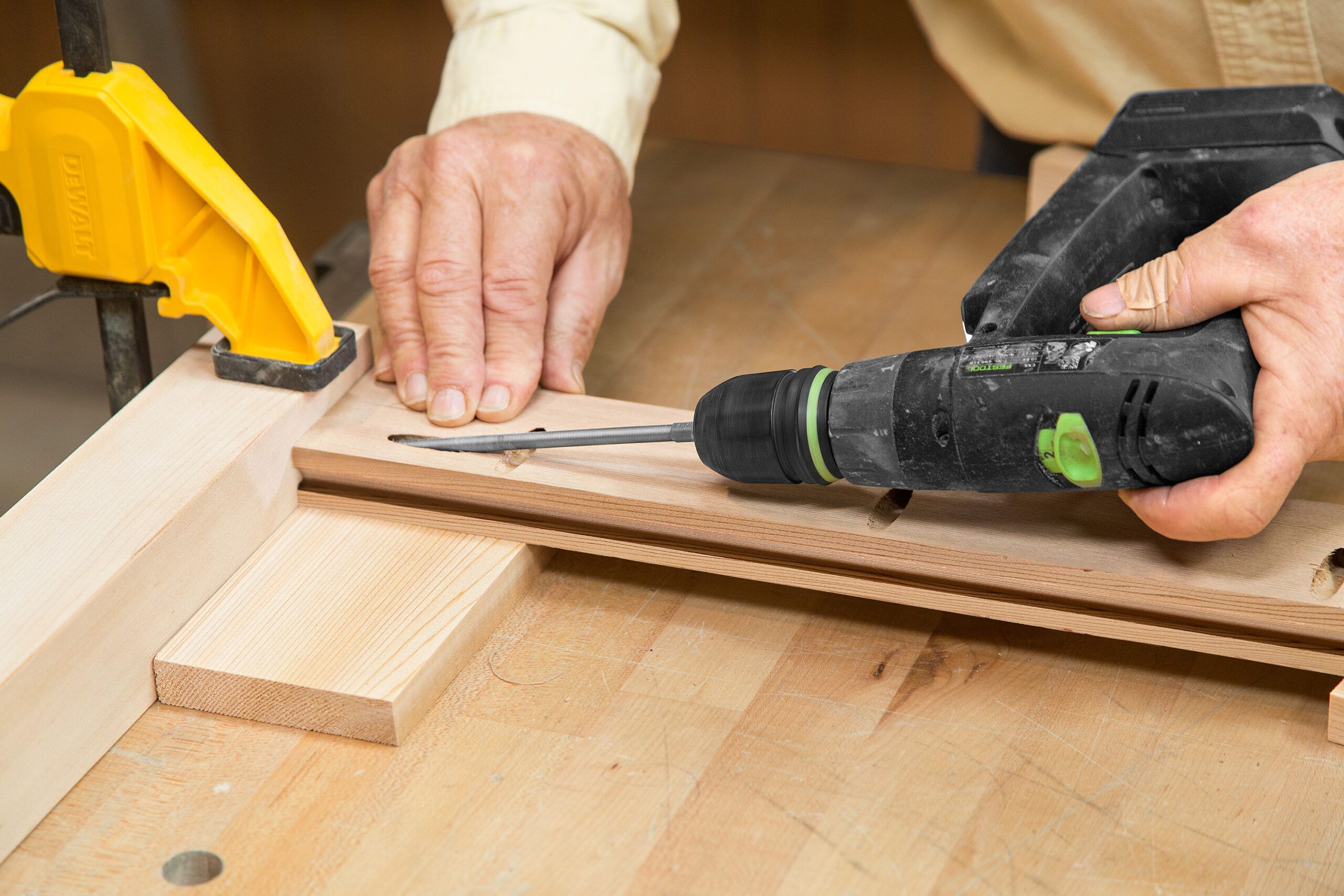
To attach the top rails, Silva clamps a leg to his workbench rounded-edge down. The top rail goes on 1 spacer blocks with the pocket holes facing up.
Silva lines up the undadoed side of the rail with the top of the leg, then butts the rail end tightly against the leg. Once the fit is just right, he secures the rails in place with pocket screws.
Attaching the Bottom Rails
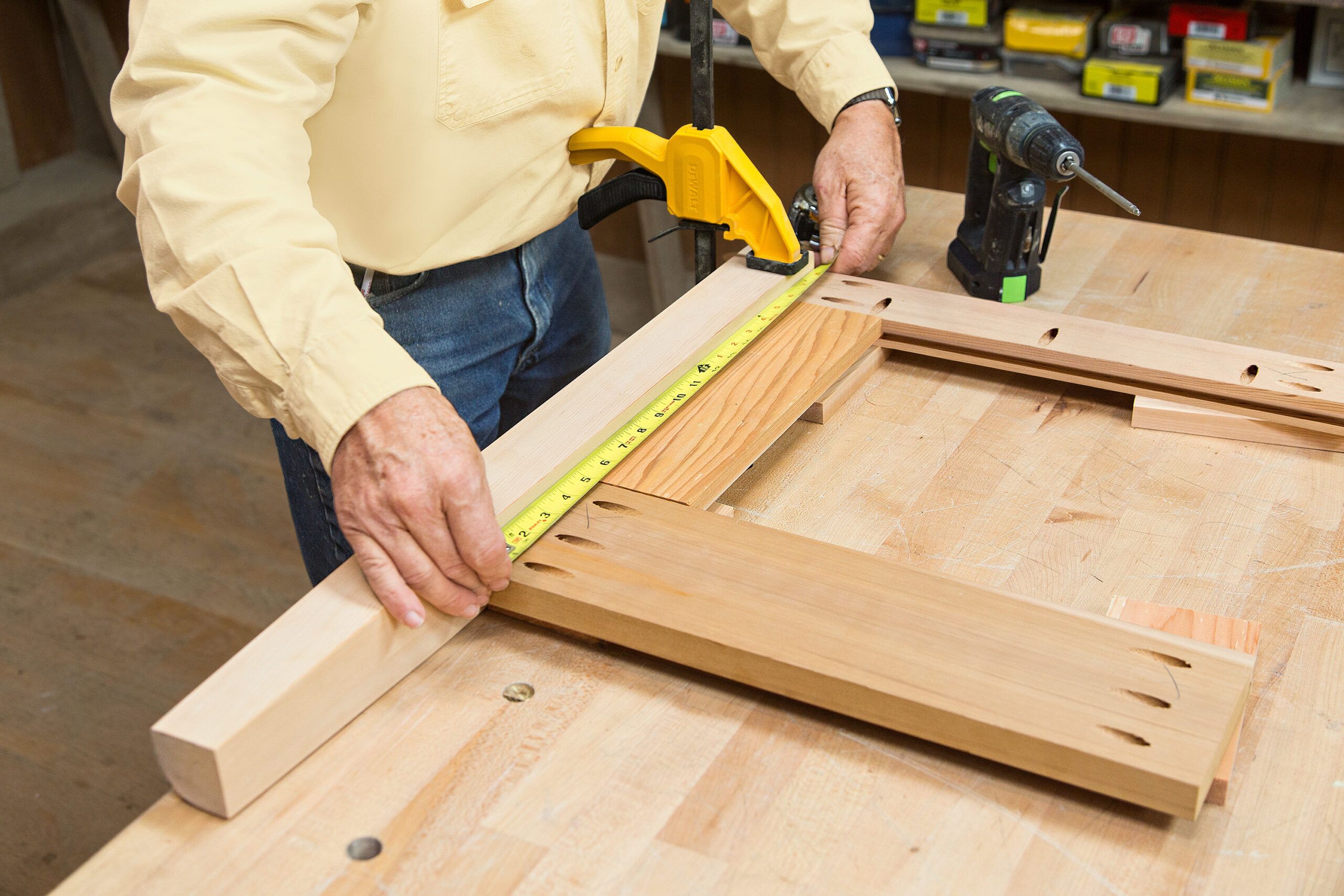
Next, Silva rests the rail pocket holes up on 1 spacers. This makes it easier to connect the ends of the panel piece with the dadoes of both rails. He pushes all three pieces against the leg, then slides the bottom rail away from the top one by ⅛ inch so it can swell when wet. Once everything checks, Silva pocket-screws the bottom rail to the leg.
Assembling the First Side of the Cedar Planter Box
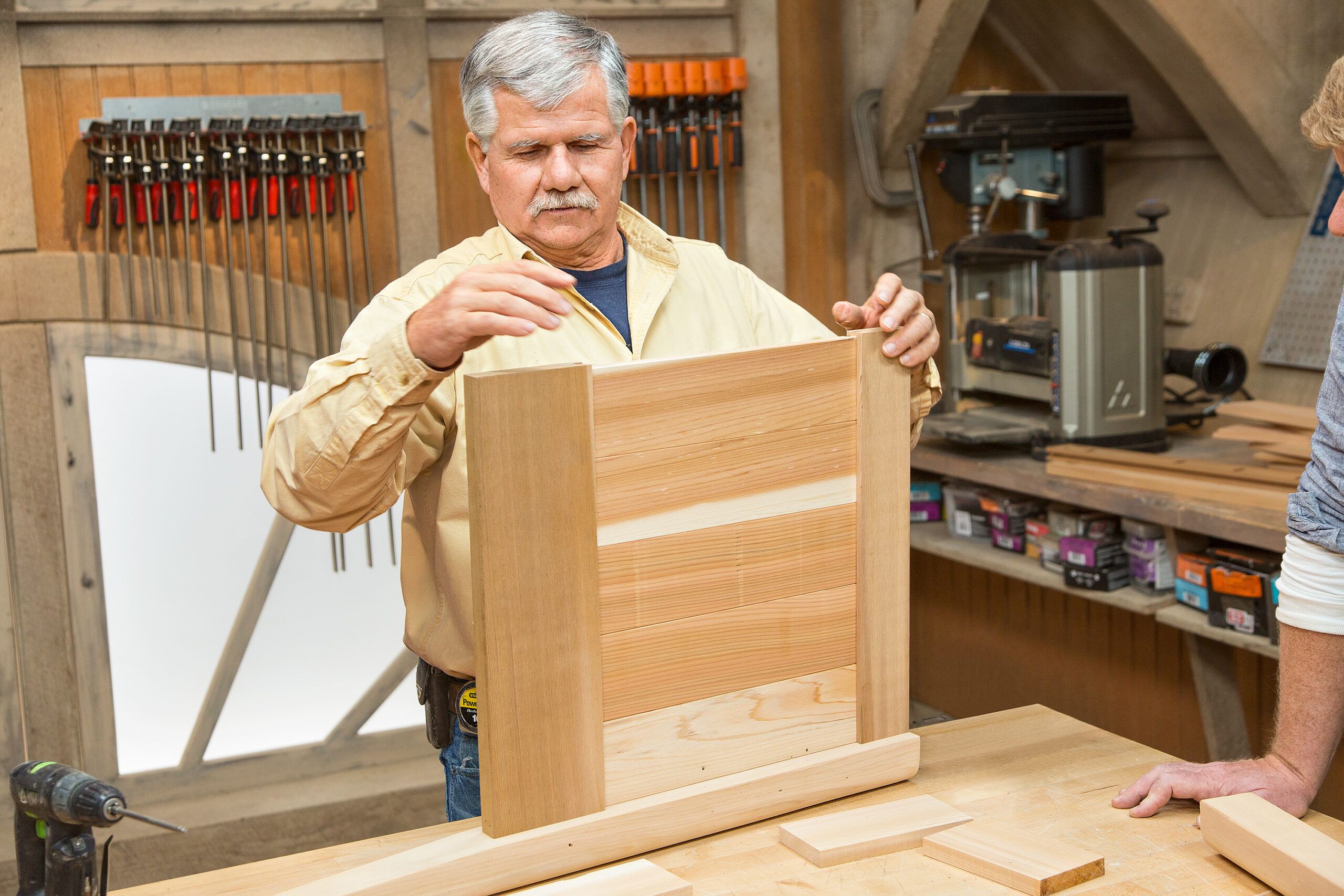
Silva slides the remaining panel pieces into the rails’ dadoes, leaving the ¼-inch reveal on the outside. He clamps another leg to the workbench but rests the rails on 1x spacer blocks so the top rail is flush with the leg’s top. Before he pocket-screws the rails to the leg, he’ll check for a ⅛-inch gap left between the rails and panel pieces.
Assembling the Rest of the Box
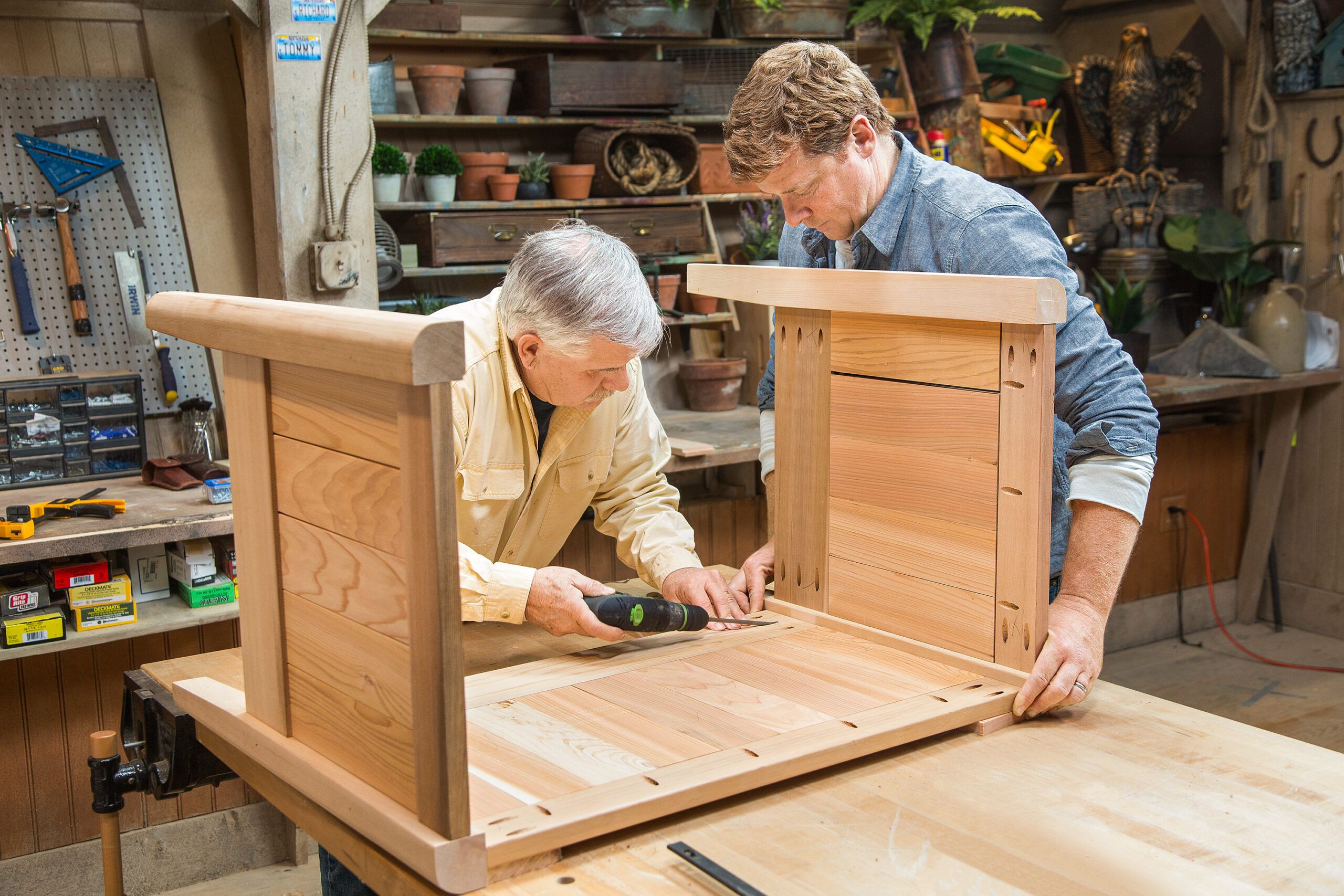
Silva makes two more sides following the last steps, then attaches the rails to the legs.
When he reaches the last side, he screws the top rail to both legs, fits the panel pieces into the top rail’s dado, then slips the bottom rail over the panel pieces’ ends. He fastens that rail to the legs so only a ⅛-inch gap remains.
Adding the Top of the Planter Box
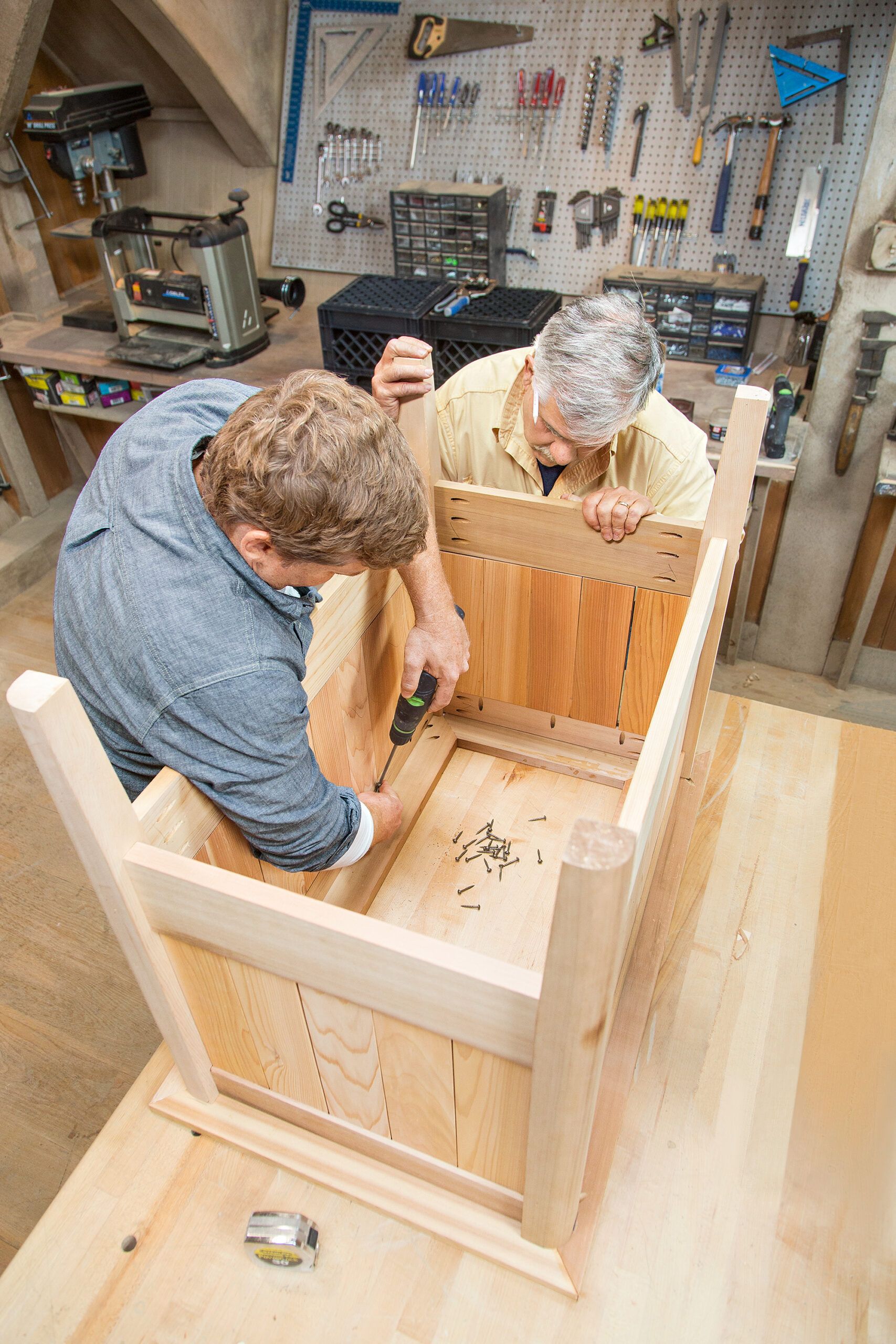
To create the top, Silva miters 5/4×6 cedar boards down to the same lengths in the cut list. He drills pocket holes in the ends of the long pieces, then glues and clamps the miter joint to keep the faces flush. Finally, he attaches it to the top of the planter box with pocket screws, leaving a 1-inch overhang on all sides.
Sanding the Top

It takes about an hour for the glue to dry. Once that’s finished, Silva uses an orbital sander and 220-grit sandpaper to smoothen the top, top edges, and corners, taking care of glue residue in the process. Once everything’s sanded to satisfaction, he follows up with 320-grit sandpaper for a smooth finish.
Building the Base
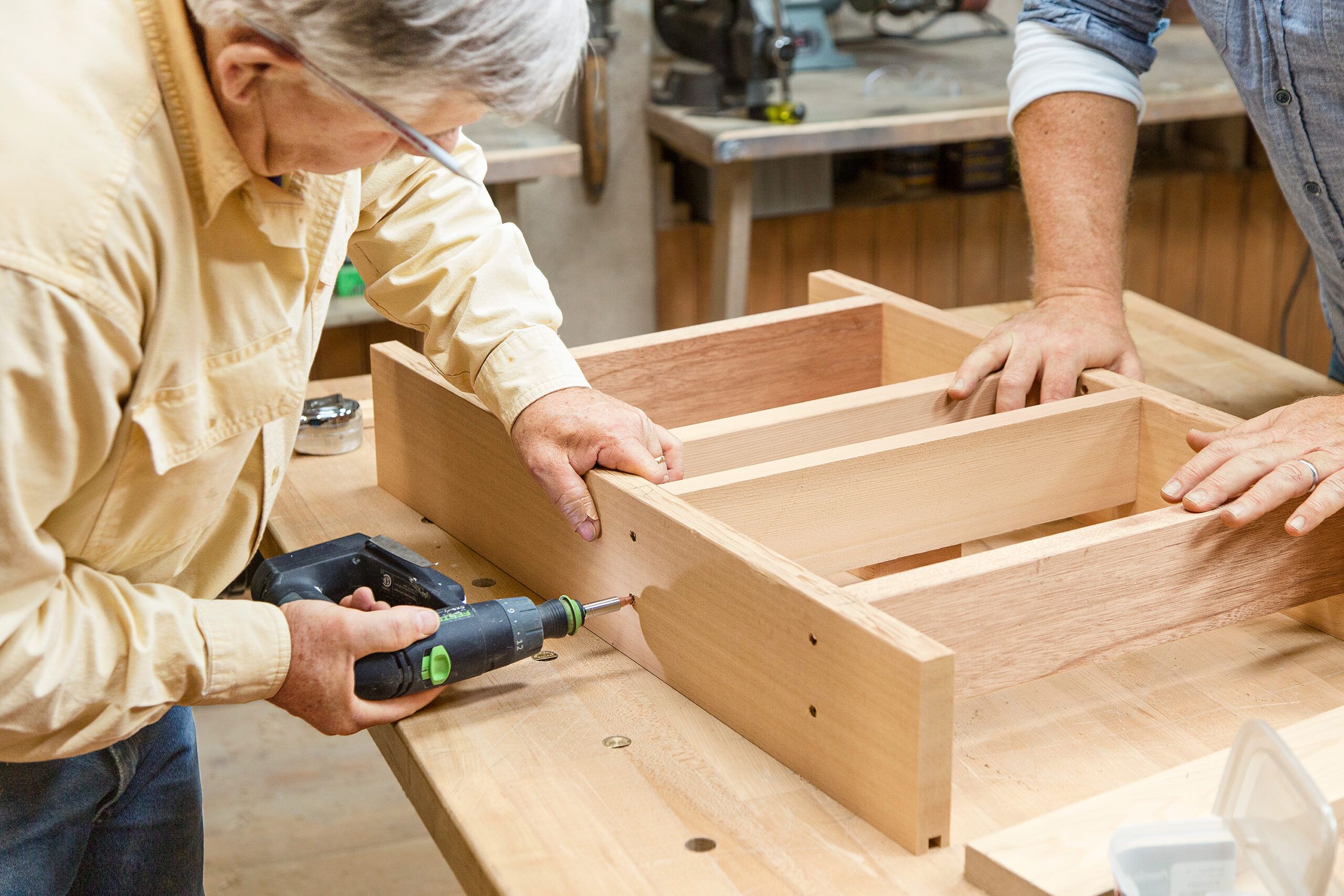
Next, Silva cuts four identical crosspieces from the 4×4 rip cuts and two identical stringers from the dadoed 5/4 x 6 stock. He fastens the crosspieces in a ladder-like frame with 2 1/2-inch deck screws.
Installing the Planter Box Base
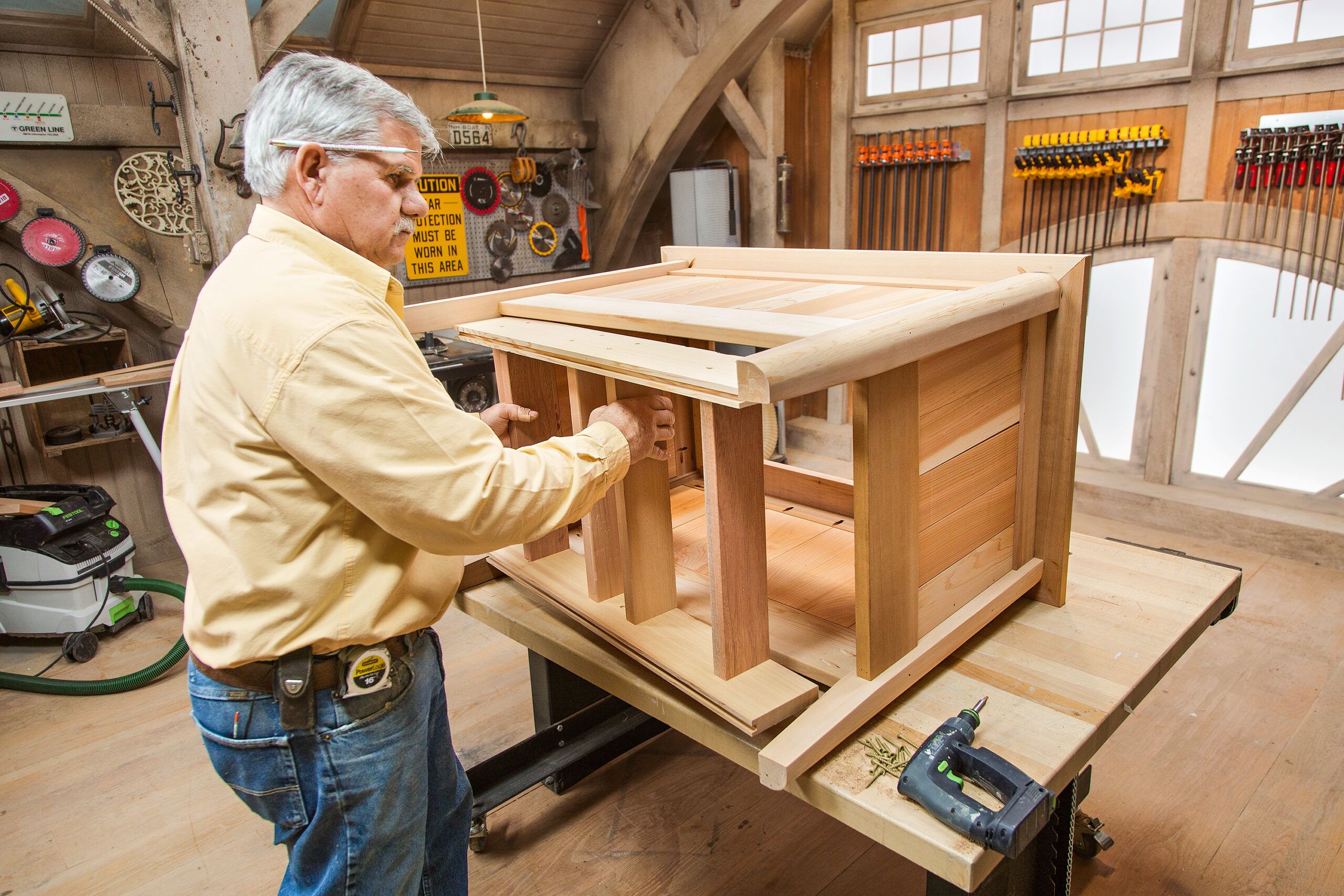
Silva now slides the base, dadoed edge down, between the bottom rails. He sets the lower edge of the stringers 3 inches above the bottom rails’ lower edge, then fastens the stringers to the rails with 1 ¼-inch wood screws.
Fitting Crates and Placing the Planter

For this planter, Silva uses milk crates and fabric grow bags to provide an air space between the wood and soil. At this point, the planter’s ready to place in your yard. You may also consider applying a penetrating oil finish to protect the cedar from the sun and elements.
